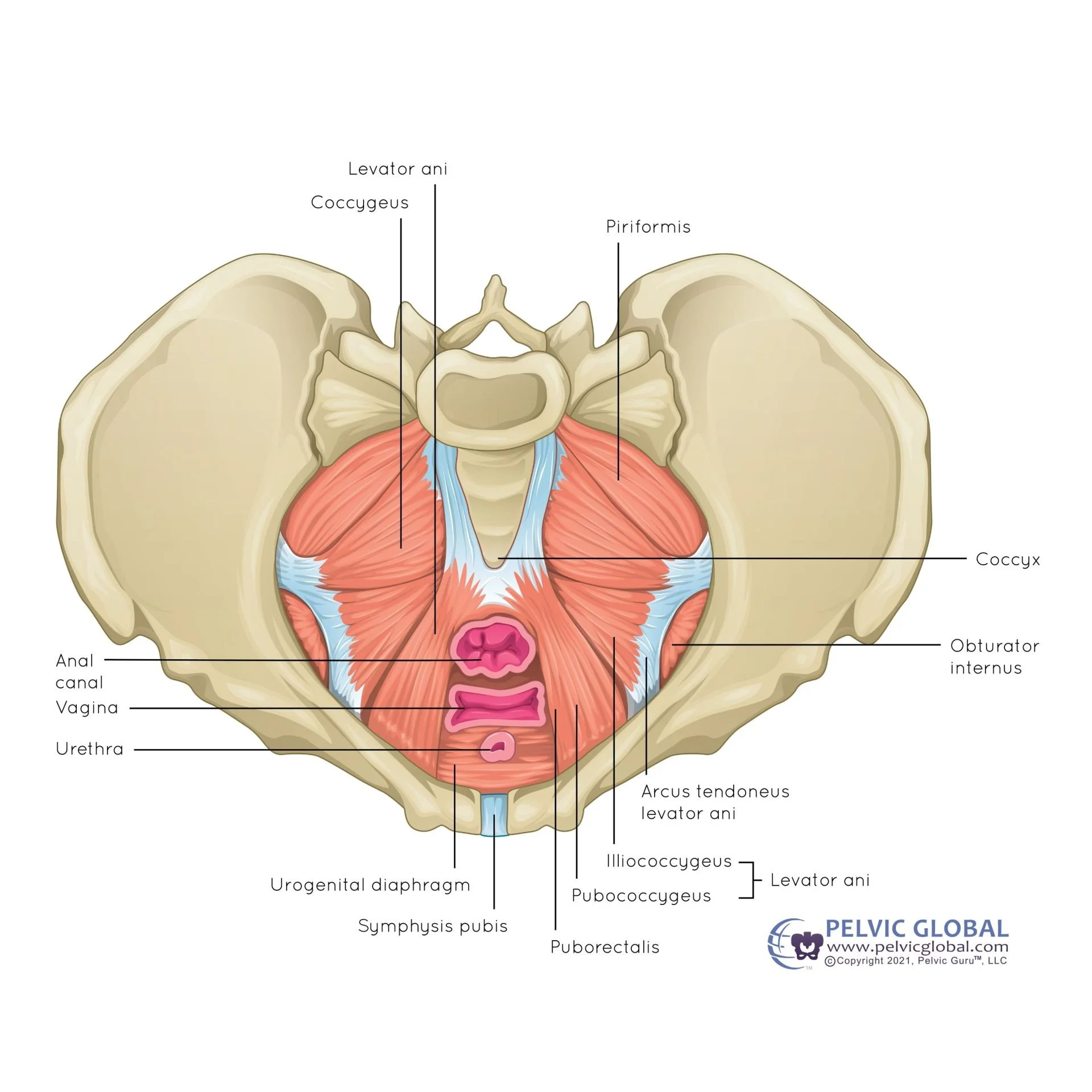What to expect during a pelvic floor internal exam?
So, you’re experiencing pelvic floor symptoms and have been referred to a pelvic floor physical therapist. The pelvic floor muscles are a group of muscles tucked inside your pelvic bowl, and to really understand what’s going on, we sometimes need to assess them internally—either vaginally or rectally. Don’t worry, it’s a normal part of pelvic floor PT, and you’re in a safe, supportive space with a qualified practitioner. Welcome to pelvic floor physical therapy!
Image used with permission from Pelvic Guru®, LLC www.pelvicglobal.com
Consent:
First and foremost- the most important thing about any type of internal work is that it is ALWAYS consensual and you can withdraw consent at any time. If you are not comfortable with an internal exam, we can always work on things externally and still get great results! However, I hope that reading this blog post further and seeing the video example below can put your mind at ease.
Your Comfort Matters:
Once you are adequately informed about the pelvic floor exam and have consented, I will exit the room for your privacy as you get ready. You will undress from your waist down and get comfy under a drape sheet!
Visual Check
First, I will assess your pelvic bony structures as well as external pelvic floor muscles to identify any areas of tension that may be contributing to your symptoms. I will also do a skin check which will give me important information about the tissue quality and make sure that we don’t miss anything important that you should be aware of. I will then ask you to breathe, cough, contract your pelvic floor and abdominals and to fully relax to see how your pelvic floor responds. Sometimes, I might even give you a mirror so that you can visualize this as well!
Internal Exam:
Next, using just one gloved finger and plenty of non-irritating lube, I will insert 1 finger into the vaginal opening (or rectum if this is a rectal exam). This gives us direct access to the pelvic floor muscles and we can obtain plenty of information about your pelvic floor muscle function this way. I will ask you to breathe in and out, contract and relax your pelvic floor, contract your abdominals, cough, etc. and assess how your pelvic floor responds to all of this!
Internal Muscle Palpation
Then, I will palpate different areas of your pelvic floor muscles and look for any trigger points that may be creating deficits in range of motion and strength. When these spots are identified, they can be released with internal manual therapy with the goal of restoring range of motion and improving blood flow/oxygen to the tissue.
Constant Communication
Throughout the entire exam, I will constantly be checking in with you about your comfort and pain levels. We generally do not want discomfort or pain levels to go above a 4/10 and prefer to ease tension out of muscles slowly. I will also be educating you on exactly what is happening in your pelvic floor and my reasoning for treatment.
Remember, you’re always in control and can stop at any time. My goal is to make this as comfortable and easy as possible for you!
Check out this video that a client made sharing her experience with me. It gives you a sneak peek into the process —it’s more laid-back than you might think!
Interested in booking a pelvic floor exam? Fill out a contact form here and I will contact you shortly!



